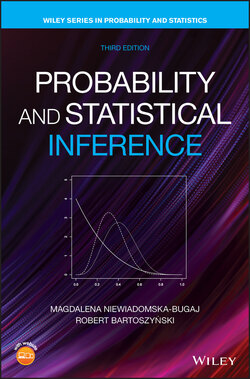Читать книгу Probability and Statistical Inference - Robert Bartoszynski - Страница 28
Example 1.11 *2
ОглавлениеThe reader may wonder whether it is correct to use the definite article in the definition above and speak of “the empty set,” since it would appear that there may be many different empty sets. For instance, the set of all kings of the United States and the set of all real numbers such that are both empty, but one consists of people and the other of numbers, so they cannot be equal. This is not so, however, as is shown by the following formal argument (to appreciate this argument, one needs some training in logic). Suppose that and are two empty sets. To prove that they are equal, one needs to prove that and . Formally, the first inclusion is the implication: “if belongs to , then belongs to .” This implication is true, because its premise is false: there is no that belongs to . The same holds for the second implication, so .
We now give the definitions of three principal operations on events: complementation, union, and intersection.
Definition 1.3.4 The set that contains all sample points that are not in the event will be called the complement of and denoted , to be read also as “not .”
Definition 1.3.5 The set that contains all sample points belonging either to or to (so possibly to both of them) is called the union of and and denoted , to be read as “ or .”
Definition 1.3.6 The set that contains all sample points belonging to both and is called the intersection of and and denoted .
An alternative notation for a complement is or , whereas in the case of an intersection, one often writes instead of .
The operations above have the following interpretations in terms of occurrences of events:
1 Event occurs if event does not occur.
2 Event occurs when either or or both events occur.
3 Event occurs when both and occur.
